This post is also available in:
 French
French  Malagasy
Malagasy
In June, the local ecological monitoring team from Velondriake travelled to Manjaboake to pass on its skills to its first set of students
It was an early sunny morning in June as we packed our kit into the boat on the beach at Andavadoaka, southwest Madagascar. We had our diving gear, survey manuals and training materials on board, ready for our three week trip to the Manjaboake locally managed marine area (LMMA), which is just south of the Velondriake Marine Protected Area (MPA) where we live and work. Along with my colleagues in the ecological monitoring team (Sylvester, Patin, Ronaldo and Damas), Blue Ventures’ science team in Andavadoaka (Javier and James), and Dupont, our boat captain, we set off on our one and a half hour journey across the Velondriake MPA.
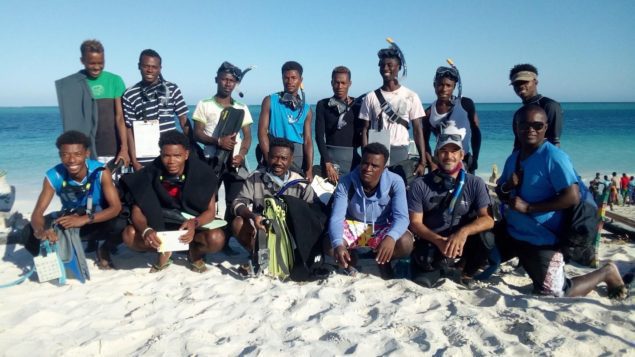
Family photo: Lower row VDK team, upper row MJB team (just damas on the further left belongs to VDK). Upper row from right to left: Julian, Falisoa, Patrick, Ericka, Tsimira, Louis, Nestor, Damas. Lowe row from left to right: Sylvestre, Ronaldo, Jacks, Patin, Javier, James | Photo: Javier Jimenez
Last year, myself, Sylvester, Patin, Ronaldo and Damas became the first ecological monitoring team in the region composed entirely of community members. Before this, most of the monitoring had been done by Blue Ventures Expeditions (BVE) volunteers; when the Covid-19 pandemic hit, that all changed. We were trained by Javier and James to identify species, collect data in the water and analyse these data so that we could better understand the condition of our MPA and LMMA.
As former fishermen, we already knew the reef, but by combining this knowledge with the scientific methodologies taught by Javier and James, we’ve become local experts which is a good step in promoting the ownership of the monitoring process locally. In June, we took our expertise to the neighbouring Manjaboake LMMA to teach a new team of local ecological monitors.
Setting sail for Manjaboake
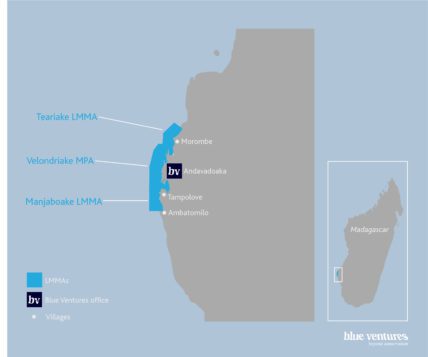
Map of Velondriake MPA and Manjaboake LMMA | Image: Blue Ventures
The Manjaboake LMMA was established in 2010, and ecologically speaking, is very similar to Velondriake. There are a number of villages within the LMMA, but Ambatomilo is the largest. Local livelihoods are also similar to those in Velondriake, with most community members relying on fishing to support their families. However, through Blue Ventures’ partnership with Ocean Farmers to develop community aquaculture in order to reduce pressure on the reef, in recent years many fishers have turned to seaweed farming.
Like in Velondriake, there is a community association in Manjaboake that oversees local conservation efforts. The Manjaboake Association had been inspired by the community-led ecological monitoring we were doing in Velondriake and reached out to us, saying that they wanted to do surveys too so that they could better understand how to protect their fisheries.
Velondriake is sort of like a reference that other LMMAs in the area want to copy. We had already been conducting science activities like participatory habitat mapping with the community in Manjaboake, so the training was just the natural continuation of that.” – Javier
Communities teaching communities
Although we had a number of applicants, seven young men were selected to take part in the training: Louis, Tsimira, Patrick, Erick, NestTor, Falisoa and Julien. It was important for them to have a solid understanding of the reef, be able to dive to a minimum of five metres and hold their breath for one minute as reef surveys are done either by SCUBA or snorkel. In addition, they had to be confident in the water and also have basic literacy and numeracy skills.
As soon as we arrived, there was excitement in the air. For the new team, this was an opportunity to learn new skills, build on their traditional knowledge of the ocean and unlock new possibilities for marine conservation. They were really happy to be our students because they were inspired by what we do in Velondriake. It helped that we were local guys too; we could teach them in their own language and as former fishers, we shared many experiences.
I think it’s really important that we were the ones to teach the new team. I have a good level of understanding of marine science and I don’t want to keep that to myself. I was excited to share my knowledge with the community so that all of us can understand the ocean in the same way.” – Damas
The training
Throughout the three weeks of training in Manjaboake, every morning began in the water, followed by an afternoon of theory. In the first week, we focused on learning the basic skills of carrying out surveys and understanding basic theory through presentations. In the second week, we tested what the students had learnt so far both in and out of the water. The final week was all about data entry and analysis, putting everything into practice.
The new team learnt very similar things to what we had been taught last year, however there was a crucial difference, as Javier explains, “in Manjaboake, we took a more fisheries-focussed approach because here they’re really concerned about maintaining their fisheries livelihoods”. This means that rather than taking a strictly ecological approach (recording all of the species in an entire ecosystem) like we do in Velondriake, we reduced the list of fish surveyed, only recording the main species targeted by fishers such as snappers, groupers, emperors, trevallies, parrotfish and rabbitfish. Adapting the approach was key to ensuring the training was tailored to the needs of the community in Manjaboake as it also aligns with the fisheries management approaches taken by other local communities in the Western Indian Ocean region.
This approach also meant that the students didn’t have to learn quite so many species’ names in English as this was what they found most challenging. Knowing how to name the fish in English will allow the students to share the information collected in their surveys in global coral reef data collection platforms such as mermaid. In a fisheries-dependent community like Manjaboake, many young boys drop out of school early so that they can go out fishing and start providing for their families, so there can be a low level of literacy. We made sure the training was as accessible as possible and explained everything clearly, reminding them that we were still learning just like them less than a year ago. The good vibes on the boat meant that we always had fun whilst learning – we all had a good laugh when one of the team accidentally called a parrotfish a ‘Patrickfish’ (one of the students is called Patrick)!
As Sylvestre said to me at the end of the three weeks, the development of the team was incredible to see, “I’ve really seen a change in my students from when they first started. They’ve started to understand things they didn’t even know about three weeks ago, and it’s clear that they really understand how important this work is. They already knew the sea, but now there’s been a change in their heart – they want to protect it.”
A cascading effort
Our hope for the future is that by doing these surveys and learning new research methodologies, we will be able to make changes in our LMMA” – Nestor
Just like when we finished our training in Velondriake, there is excitement in the air about what the future could hold for communities in Manjaboake. With these newfound skills, the ecological monitoring team can work with the Manjaboake Association to make more informed decisions about their marine resources. They’ve chosen nine survey sites which they will survey every week, and we’ll be visiting them monthly to check up on how they’re doing. They have learned how to do initial basic analysis of the data collected in their surveys so that they can inform straightaway their communities about the health of their key marine habitats and fisheries.
We’re hoping to lead more training in the central and northern areas of the Manjaboake LMMA, and venture to other LMMAs in Madagascar to share what we’ve learnt and also train women as ecological monitors which includes a group of 5 ladies that are to be part of the 1st women cohort. As Javier says, “We’re working on an ecological monitoring toolkit so that we can scale up this training all along the coast. I want the different LMMAs to be able to work collaboratively and grow the autonomy of the communities in the management of their fisheries and ecological data.”
I am grateful to Javier and James for teaching us how to survey the reef; if we didn’t have them as our teachers, we wouldn’t have been able to become teachers ourselves. Now that we understand, we have the power to teach more community members like us. It’s a cascading effort that I hope will continue for years to come.
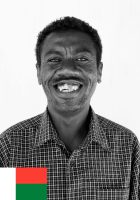 By Ange ‘Jacks’ Mahagaga
By Ange ‘Jacks’ Mahagaga
Jacks is part of the 1st community ecological monitoring team in Andavadoaka.


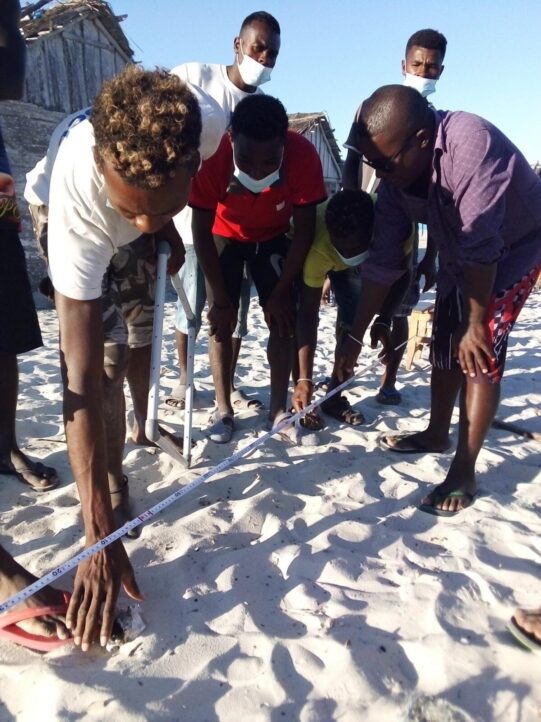
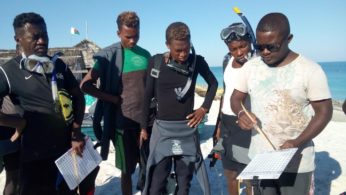
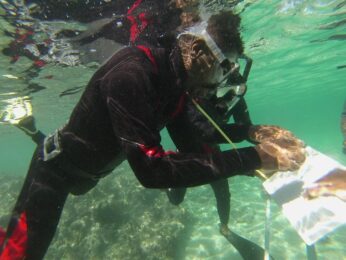
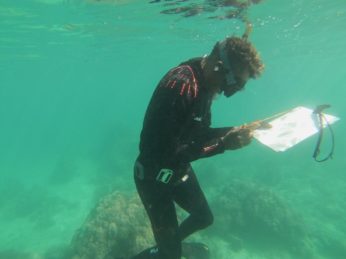
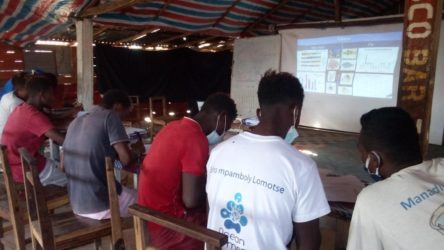
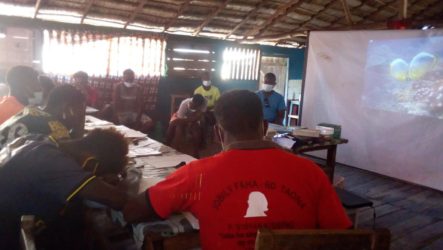
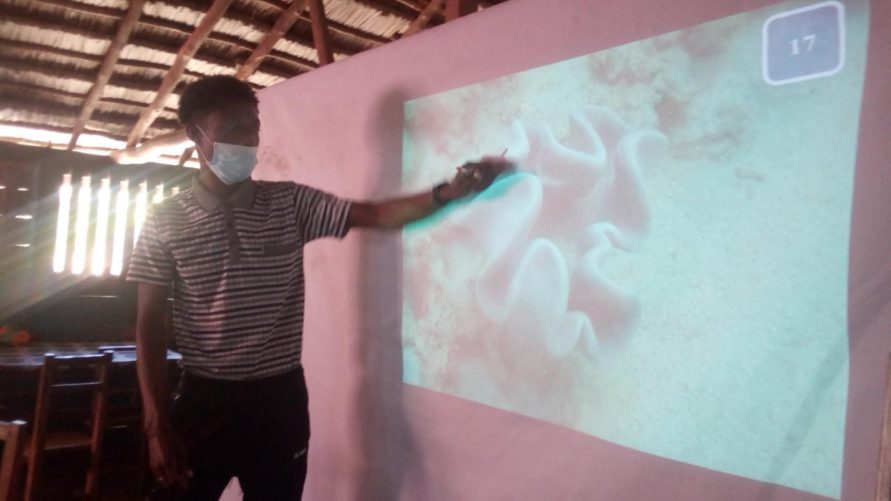
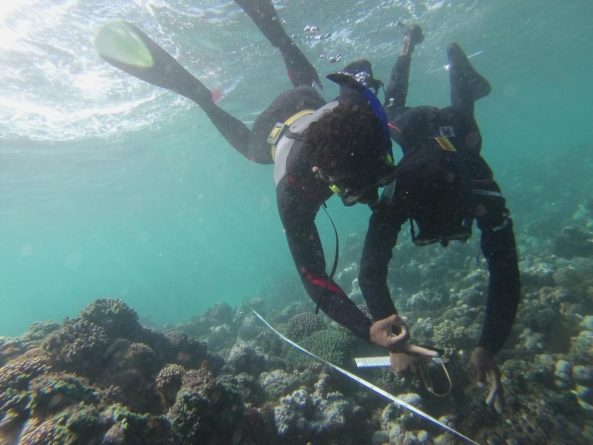
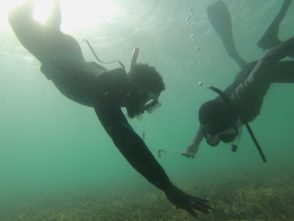
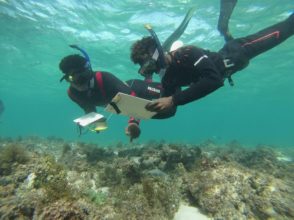
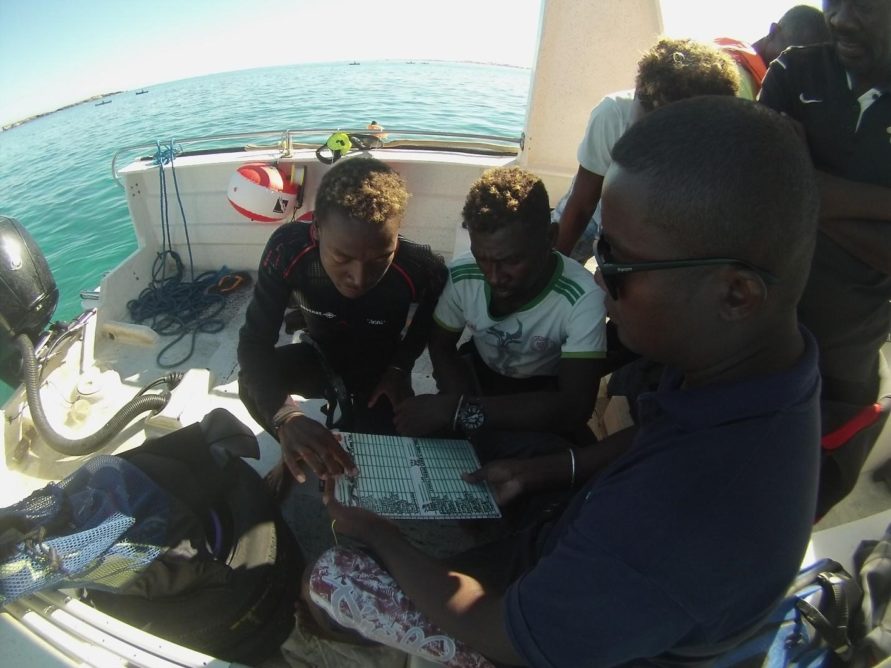
This is terrific news! Now that survey teams are teachers and students with local reef experience and language skills, the future of LMMA management will be totally local, which will insure that it will continue into the future without relying on outside input. That is a wonderful step toward a long and successful future.